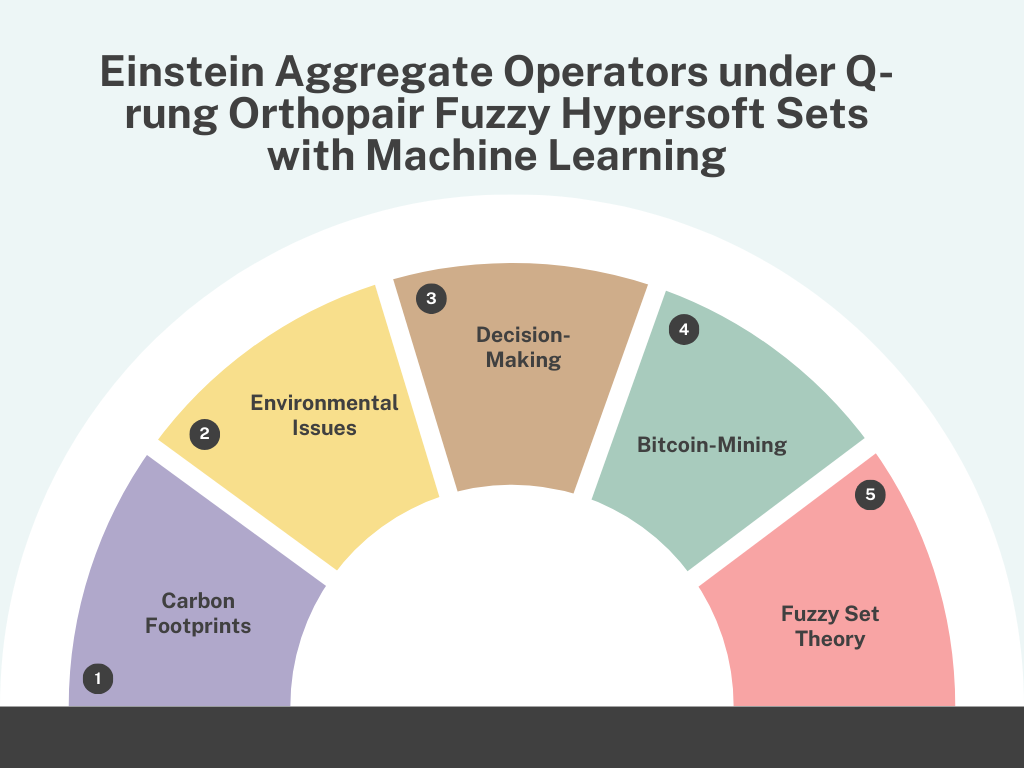Einstein Aggregate Operators under Q-rung Orthopair Fuzzy Hypersoft Sets with Machine Learning
Main Article Content
Abstract
Thailand with its impressive 15.5% global share of renewable energy production, has a small 1% share of bitcoin mining. At the same time, the country is dealing with the severe effects of climate change, which emphasizes the necessity of taking proactive steps to solve environmental issues. This research integrates machine learning techniques and Einstein Aggregate Operators under q-rung orthopair fuzzy hypersoft set (q-ROFHS)-based multi-criteria decision-making technique to present a new method for analyzing CO2 impacts and mitigation solutions in Thailand. We evaluate the environmental impacts of bitcoin mining and the incorporation of renewable energy sources using an interdisciplinary framework, and we also calculate the associated carbon footprints. Additionally, the accuracy and effectiveness of studies on CO2 impacts and mitigation measures in Thailand are improved by machine learning algorithms that analyze large and complicated datasets to find patterns in CO2 emissions, energy consumption, and the integration of renewable energy. This article offers insightful analysis and practical suggestions for combating climate change and advancing sustainable development in Thailand and beyond. In future it’s accuracy can be increased under other hybrid set structures and can be applied to sole the complex environmental and other problems.
Downloads
Article Details

This work is licensed under a Creative Commons Attribution 4.0 International License.





